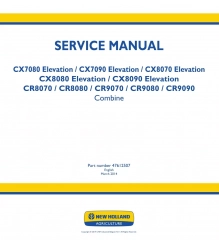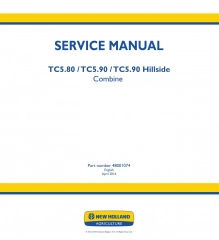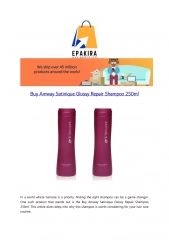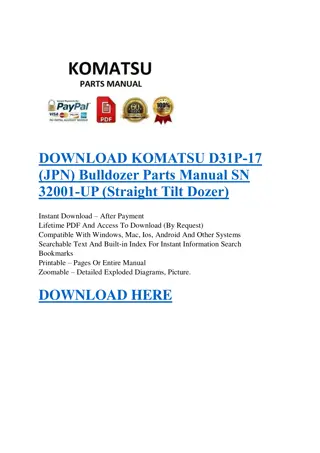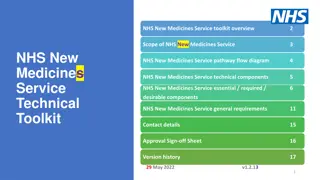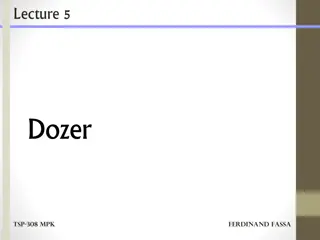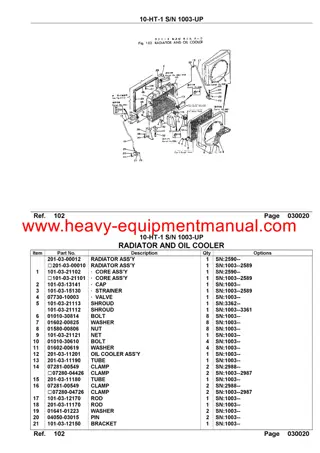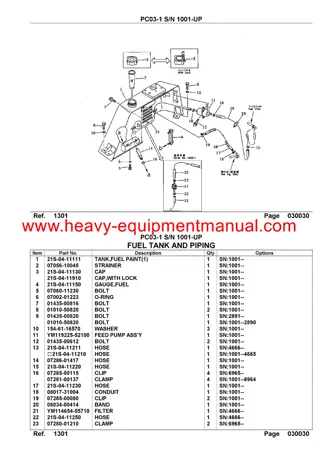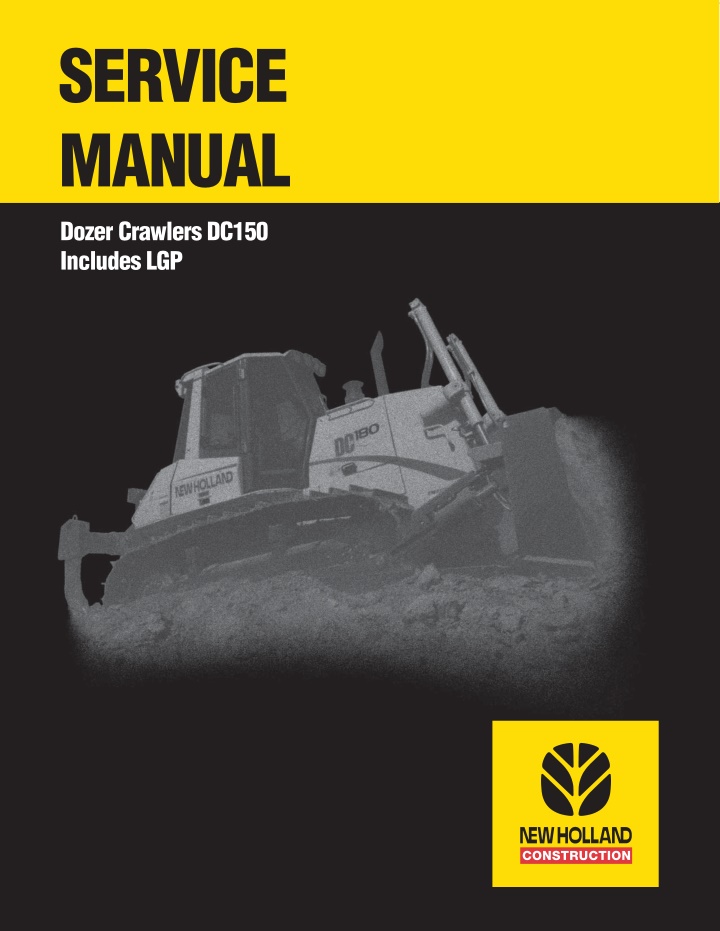
New Holland DC150 Crawler Dozer Service Repair Manual Instant Download
New Holland DC150 Crawler Dozer Service Repair Manual Instant Download
Download Presentation

Please find below an Image/Link to download the presentation.
The content on the website is provided AS IS for your information and personal use only. It may not be sold, licensed, or shared on other websites without obtaining consent from the author. If you encounter any issues during the download, it is possible that the publisher has removed the file from their server.
You are allowed to download the files provided on this website for personal or commercial use, subject to the condition that they are used lawfully. All files are the property of their respective owners.
The content on the website is provided AS IS for your information and personal use only. It may not be sold, licensed, or shared on other websites without obtaining consent from the author.
E N D
Presentation Transcript
SERVICE MANUAL Dozer Crawlers DC150 Includes LGP
PROPRIETARY NOTICE The contents of this manual are proprietary data of New Holland Construction. Reproduction or use of any part for other than the operation and maintenance of New Holland Construction equipment is permissible only if expressly authorized in writing by New Holland Construction. Additional copies may be obtained from your New Holland Construction Dealer. Address requests for copies to your Dealer and refer to the publication number appearing on the bottom of the manual cover. COMPANY POLICY Company policy, which is one of continuous improvement, reserves the right to change prices and to make changes in design and specification at any time without notice and without obligation to modify units previously built. All data given in this book is subject to production variations. Dimensions and weights are approximate only and the illustrations do not necessarily show machines in standard condition. For exact information about any particular machine please consult your New Holland Construction Dealer. PARTS AND ACCESSORIES Genuine parts and accessories have been specifically designed for these machines. We would like to point out that non-genuine parts and accessories have NOT been examined and released by the Company. The installation and or use of such products could have negative effects upon the design characteristics of your machine and thereby affect its safety. The company is not liable for any damage caused by the use of non-genuine parts and accessories. MODEL CODES The range of machines listed may not be available in all countries or markets therefore, for the latest information consult your local New Holland Construction Dealer. MODEL ENGINE TYPE - H.P. DC150 CUMMINS 6BT 5.9 (150 H.P.) 1999 NEW HOLLAND CONSTRUCTION
OWNER ASSISTANCE We at New Holland and your New Holland dealer want you to be completely satisfied with your investment. Normally any problems with your equipment will be handled by your dealer's Service Department. Sometimes, however, misunderstandings can occur. If your problem has not been handled to your satisfaction, we suggest the following. 1. Contact the owner or General Manager of the dealership, explain the problem, and request assistance. When additional assistance is needed, your dealer has direct access to our office. 2. If you cannot obtain satisfaction by doing this, contact the New Holland Construction office and provide them with: - Your name, address, and telephone number - Machine model and serial number - Dealership name and address - Machine purchase date and amount of use - Nature of problem NEW HOLLAND CONSTRUCTION 245 E North Ave Carol Stream, IL 60188 Ph # (630) 260-4000 When contacting New Holland, be aware that your problem will likely be resolved in the dealership using the dealer's facilities, equipment, and personnel. So it is important that your initial contact be with the dealer. SPARE PARTS To maintain operating efficiency, use NEW HOLLAND original spare parts. When ordering parts, give the following information: - - - Machine model Machine and engine serial numbers Part number from the Parts Catalog 1999 NEW HOLLAND CONSTRUCTION
https://www.ebooklibonline.com Hello dear friend! Thank you very much for reading. Enter the link into your browser. The full manual is available for immediate download. https://www.ebooklibonline.com
TO THE OWNER: The warranty coverage that is extended to your machine is explained in the Warranty and Limitation of Liability form. Your dealer will provide you with a copy of the warranty and retain a copy which you have signed. After you read the warranty, ask your dealer to explain any points that you may not understand. The machine was designed to power and propel itself. It is intended to move material in the normal and customary applications. Do not modify or alter or permit anyone else to modify or alter this machine or any of its com- ponents mechanical function with first consulting an authorized New Holland Construction dealer. If you have any questions regarding machine modifications, contact New Holland Construction, 245 E. North Ave., Carol Stream, IL 60188. Your safety and the safety of those around you depend upon the care and good judgment you use while operating this equipment. Read the safety precautions carefully. After you have operated the machine for 50 hours, take your machine and this manual to your selling dealer. He will perform the factory recommended 50-hour service. You will be respon- sible for the cost of lubricants, fluids, filters and other items replaced as part of normal maintenance. Prior to taking the machine to your selling dealer for service, it is recommended that you contact them to determine any other charges for which you may be responsible. All data given in this book is subject to product variations. Dimensions and weights are ap- proximate only and the illustrations do not necessarily show machines in standard condition. For exact information about any particular machine, please consult your New Holland Con- struction dealer. CAUTION: THIS SYMBOL IS USED THROUGHOUT THIS BOOK WHENEVER PERSONAL SAFETY IS INVOLVED. TAKE TIME TO READ AND FOLLOW THE INSTRUCTIONS. BE CAREFUL! CAUTION: PICTURES IN THIS MANUAL MAY SHOW PROTECTIVE SHIELDING OPEN OR REMOVED TO BETTER ILLUSTRATE A PARTICULAR FEATURE OR ADJUSTMENT. BE CERTAIN, HOWEVER, TO CLOSE OR REPLACE ALL SHIELDING BEFORE OPERATING THE MACHINE. IMPROVEMENTS New Holland Construction is continually striving to improve its products. We reserve the right to make improvements or changes when it becomes practical and possible to do so, without incurring any obligation to make changes or additions to the equipment sold previously. 1999 NEW HOLLAND CONSTRUCTION
PRECAUTIONARY STATEMENTS PERSONAL SAFETY Throughout this manual and on machine decals, you will find precautionary statements ( CAUTION , WARNING , and DANGER ) followed by specific instructions. These precautions are intended for the personal safety of you and those working with you. Please take the time to read them. CAUTION: THE WORD CAUTION IS USED WHERE A SAFE BEHAVIORAL PRACTICE ACCORDING TO OPERATING AND MAINTENANCE INSTRUCTIONS AND COMMON SAFETY PRACTICES WILL PROTECT THE OPERATOR AND OTHERS FROM ACCIDENT INVOLVEMENT. WARNING: THE WORD WARNING DENOTES A POTENTIAL OR HIDDEN HAZARD WHICH HAS A POTENTIAL FOR SERIOUS INJURY. IT IS USED TO WARN OPERATORS AND OTHERS TO EXERCISE EVERY APPROPRIATE MEANS TO AVOID A SURPRISE INVOLVEMENT WITH MACHINERY. DANGER: THE WORD DANGER DENOTES A FORBIDDEN PRACTICE IN CONNECTION WITH A SERIOUS HAZARD. FAILURE TO FOLLOW THE CAUTION , WARNING , DANGER , AND STOP INSTRUCTIONS MAY RESULT IN SERIOUS BODILY INJURY OR DEATH. MACHINE SAFETY Additional precautionary statements ( ATTENTION and IMPORTANT ) are followed by spe- cific instructions. These statements are intended for machine safety. ATTENTION: The word ATTENTION is used to warn the operator of potential machine damage if a certain procedure is not followed. IMPORTANT: The word IMPORTANT is used to inform the reader of something he needs to know to prevent minor machine damage if a certain procedure is not followed. 1999 NEW HOLLAND CONSTRUCTION
SAFETY RULES This symbol is your safety alert sign. It means ATTENTION! BECOME ALERT! YOUR SAFETY IS INVOLVED! Read and heed all safety instruction carrying the signal words WARNING and DANGER. STUDY THE OPERATION AND MAINTENANCE INSTRUCTION MANUAL THROUGHLY BEFORE STARTING, OPERATING, MAINTAINING, FUELING OR SERVICING THIS MACHINE. MOST ACCIDENTS ARE CAUSED BY FAILURE OF SOME INDIVIDUAL TO FOLLOW SIMPLE AND FUNDAMENTAL SAFETY RULES OR PRECAUTION. FOR THIS REASON MOST ACCIDENTS CAN BE PREVENTED BY RECOGNIZING THE REAL CAUSE AND DOING SOMETHING ABOUT IT BEFORE ACCIDENT OCCURS. REGARDLESS OF THE CARE USED IN THE DESIGN AND CONSTRUCTION OF ANY TYPE OF EQUIPMENT THERE ARE MANY CONDITIONS THAT CAN'T BE COMPLETELY SAFEGUARDED AGAINST WITHOUT INTERFERING WITH REASONABLE ACCESSIBILITY AND EFFICIENT OPERATION. 1999 NEW HOLLAND CONSTRUCTION
CALIFORNIA PROPOSITION 65 WARNING Diesel engine exhaust and some of its constituents are know to the State of California to cause cancer, birth defects, and other reproductive harm. 1999 NEW HOLLAND CONSTRUCTION
SAFETY PRECAUTION INFORMATION UNSAFE OPERATING PRACTICES AND IMPROPER USE OF THE MACHINE AND ITS ATTACHMENTS ON THE PART OF THE OPERATOR OR SERVICE TECHNICIAN CAN RESULT IN INJURIES. OBSERVE THE FOLLOWING SAFETY PRECAUTIONS AT ALL TIMES: 1. FOR SERVICING, THE MACHINE SHOULD BE ON LEVEL TERRAIN, ENGINE STOPPED WITH THE WHEELS BLOCKED OR THE ENTIRE MACHINE SOLIDLY SUPPORTED WITH THE WHEELS OFF THE GROUND BEFORE SERVICING ANY COMPONENT OF THE DRIVETRAIN. 2. FOR SERVICING UNDER THE MOVABLE EQUIPMENT, SUCH AS OPERTOR S SEAT, ENGINE HOODS, ETC. MOVE THE EQUIPMENT ASSEMBLY TO THE LATCHED POSITION AND SECURELY LATCH. 3. DO NOT OPERATE THE MACHINE UNLESS ALL MOVABLE EQUIPMENT IS LATCHED IN THE OPERATE POSITION. 4. DO NOT SERVICE THE MACHINE WITH A RAISED HYDRAULIC EQUIPMENT UNLESS THE HYDRAULIC EQUIPMENT IS RESTING ON LOCK PINS OR CYLINDER LOCKING TOOLS OR FIXTURES. 5. DO NOT SERVICE THE MACHINE WITH THE ENGINE RUNNING UNLESS THE MACHINE IS PROPERLY AND SECURELY SUPPORTED WITH ALL FOUR WHEELS OFF THE GROUND. 6. USE CAUTION WHEN SERVICING THE UNIT AROUND MOVING PARTS. 7. DO NOT TILT ANY MOVABLE EQUIPMENT WITHOUT PROPER INSTRUCTION. 8. DO NOT TILT ANY MOVABLE EQUIPMENT WITHOUT USING THE PROPER TOOLS. 9. REINSTALL ALL SHIELDS REMOVED FOR SERVICE. 10. NEVER LOOSEN ANY HYDRAULIC CONNECTIONS BEFORE RELIEVING THE PRESSURE IN THE HYDRAULIC SYSTEM. 11. WEAR EYE PROTECTION SUCH AS GOGGLES, ETC. 12. WEAR EAR PROTECTION SUCH AS EARPLUGS, ETC. WHEN YOU FEEL THE NOISE LEVEL IS UNCOMFORTABLE. 13. IF ANY SERVICING OR ADJUSTMENTS REQUIRE THE BATTERY TO BE DISCONNECTED, DISCONNECT THE (-) NEGATIVE GROUND CABLE. 14. WHEN SERVICING ELECTRICAL COMPONENTS, DISCONNECT THE (-) NEGATIVE GROUND CABLE. 15. IF AN ELECTRONIC EQUIPMENT REQUIRES REMOVAL FROM THE DASH AREA OR THE MACHINE, DISCONNECT THE (-) NEGATIVE GROUND BATTERY CABLE. THIS WILL SHUT OFF POWER TO THE ELECTRICAL SYSTEM AND PREVENT DAMAGE TO THE ELECTRICAL SYSTEM. 16. IF WELDING IS REQUIRED ON THE MACHINE, DISCONNECT THE (-) NEGATIVE GROUND CABLE. FAILURE TO DISCONNECT THE BATTERY MAY RESULT IN DAMAGE TO THE ELECTRICAL SYSTEM, MONITORING SYSTEM AND/OR OTHER ELECTRICAL COMPONENTS. 17. IF WELDING IS REQUIRED ON AN ATTACHMENT, REMOVE THE ATTACHMENT FROM THE MACHINE. 1999 NEW HOLLAND CONSTRUCTION
18. GIVE COMPLETE AND UNDIVIDED ATTENTION TO THE JOB AT HAND SO THAT COMPLETE CONTROL OF THE MACHINE IS MAINTAINED AT ALL TIMES. 19. DRIVE SLOWLY OVER ROUGH GROUND AND ON SLOPES; KEEP ALERT FOR HOLES, DITCHES AND OTHER IRREGULARITIES THAT MAY CAUSE THE MACHINE TO OVERTURN. 20. AVOID STEEP HILLSIDE OPERATION WHICH COULD CAUSE THE MACHINE TO OVERTURN. 21. NEVER TRANSPORT A LOADED BUCKET AT FULL HEIGHT. OPERATE THE MACHINE WITH THE LOAD AS LOW AS POSSIBLE UNTIL IT BECOMES NECESSARY TO RAISE THE BOOM TO DISCHARGE THE LOAD INTO A TRUCK, CONTAINER, ETC. 22. REDUCE SPEED WHEN TURNING SO THERE IS NO DANGER OF OVERTURNING. 23. NEVER DRIVE UP OR BACK UP A HILL OR INCLINE WITH A RAISED BOOM OR THE MACHINE COULD OVERTURN. 24. ALWAYS LOOK BEHIND YOU BEFORE BACKING UP THE MACHINE. 25. MAINTAIN PROPER FLUID LEVELS TO PREVENT LOSS OF POWER, BRAKING OR OTHER FUNCTIONS. 26. DO NOT ALLOW PASSENGERS TO RIDE ON THE MACHINE AT ANY TIME. 27. DO NOT ALLOW CHILDREN TO OPERATE THE MACHINE OR RIDE ON THE MACHINE AT ANY TIME. 28. DO NOT ALLOW ANYONE TO OPERATE OR SERVICE THE MACHINE WITHOUT PROPER INSTRUCTION. 29. OSHA REQUIRES THAT ALL OPERATORS BE INSTRUCTED ON THE PROPER OPERATION OF THE MACHINE BEFORE THEY OPERATE THE UNIT. 30. DO NOT OPERATE THE LOADER IN ANY POSITION OTHER THAN WHILE IN THE OPERATOR S SEAT WITH THE SEAT BELT SECURELY FASTENED. 31. BEFORE STARTING THE ENGINE, BE SURE THAT ALL OPERATING CONTROLS ARE IN NEUTRAL AND THE PARKING BRAKE IS ENGAGED. 32. NEVER OPERATE THE ENGINE IN A CLOSED BUILDING WITHOUT ADEQUATE VENTILATION. 33. REFUEL THE MACHINE OUTDOORS WITH THE ENGINE SHUT OFF. REPLACE THE FUEL CAP SECURELY. USE AN APPROVED FUEL CONTAINER. DO NOT SMOKE WHEN HANDLING FUEL. AVOID SPILLING FUEL. 34. AFTER OPERATING THE ENGINE, NEVER TOUCH THE MUFFLER, EXHAUST PIPE, ENGINE OR RADIATOR UNTIL THEY HAVE HAD TIME TO COOL. 35. DRESS APPROPRIATELY WEAR RELATIVELY TIGHT-FITTING CLOTHING WHEN OPERATING OR SERVICING THE MACHINE. LOOSE OR TORN CLOTHING CAN CATCH IN MOVING PARTS OR CONTROLS. 36. BEFORE SERVICING THE MACHINE, OR ANY OF ITS ATTACHED EQUIPMENT, BE SURE THAT THE ATTACHMENTS ARE LOWERED TO THE GROUND OR ARE SUPPORTED. 37. DO NOT WORK UNDER OVERHANGS, ELECTRIC WIRES, OR WHERE THERE IS DANGER OF A SLIDE. 1999 NEW HOLLAND CONSTRUCTION
38. WEAR AN APPROVED SAFETY HAT WHEN OPERATING THE MACHINE AND WHILE IN ANY WORK AREA. 39. WHEN DRIVING THE MACHINE ON A ROAD OR HIGHWAY, USE WARNING LIGHTS OR WARNING DEVICES AS MAY BE REQUIRED BY LOCAL OR STATE GOVERNMENT REGULATIONS. HEADLIGHTS, WARNING LIGHTS AND SMV SIGNS ARE AVAILABLE THROUGH YOUR NEW HOLLAND DEALER. 40. KEEP THE MACHINE CLEAN. DO NOT ALLOW TRASH, DEBRIS OR OTHER ARTICLES TO ACCUMU- LATE IN THE CAB, FLOOR OR FOOT CONTROL PEDAL AREA THAT MAY HINDER SAFE MACHINE OPERATION. 41. NEVER OPERATE THE MACHINE WITH ANY OF THE SHIELDING REMOVED. 42. NEVER OPERATE THE MACHINE WITHOUT WINDOWS AND/OR SCREENS IN PLACE. 43. NEVER EXTEND ANY PART OF THE BODY OUTSIDE OF THE OPERATOR S AREA. 44. ALWAYS PROPERLY TIE DOWN THE MACHINE TO A TRUCK OR TRAILER BEFORE TRANSPORT. 45. MAKE SURE ALL BYSTANDERS ARE AT A SAFE DISTANCE AWAY FROM THE MACHINE BEFORE STARTING THE ENGINE. 46. DO NOT ALLOW ANYONE NEAR THE MACHINE WHILE THE ENGINE IS RUNNING AND THE MACHINE IS OPERATIONAL. 47. WHEN USING THE MACHINE TO CRANE OBJECTS, DO NOT ALLOW ANYONE TO RIDE ON OBJECTS BEING CRANED. 48. DO NOT USE THE MACHINE AS A WORK PLATFORM FOR SUPPORTING MATERIALS. 49. DO NOT LIFT PERSONNEL OR ALLOW PERSONNEL TO WORK WHILE STANDING IN THE BUCKET OR ON OTHER ATTACHMENTS. THIS IS NOT A MAN-LIFT. OSHA REQUIREMENTS NOW MAKE IT THE EMPLOYER S RESPONSIBILITY TO FULLY INSTRUCT EACH OPERATOR IN THE PROPER AND SAFE OPERATION OF ALL OPERATIVE EQUIPMENT. BOTH EMPLOYER AND EMPLOYEE SHOULD THOROUGHLY FAMILIARIZE THEMSELVES WITH THE MACHINE OPERATION. CAUTION! SOME PICTURES IN THIS MANUAL SHOW SAFETY SHIELDS REMOVED OR OPEN TO SHOW PARTS BEING SERVICED OR FOR CLARITY. ALL SHIELDS SHOULD BE CLOSED OR RE- PLACED PRIOR TO OPERATING THE MACHINE. DANGER! FASTEN SEAT BELT BEFORE STARTING ENGINE! 1999 NEW HOLLAND CONSTRUCTION
SUMMARY GENERALITIES SECT. 0 ENGINE SECT. 1 TRANSMISSION SECT. 2 FINAL DRIVES SECT. 3 STEERING CLUTCHES - BRAKES SECT. 4 UNDERCARRIAGE SECT. 5 DOZER EQUIPMENT HYDRAULIC SYSTEM SECT. 6 ELECTRICAL SYSTEM SECT. 7 7 1 6 4 5 3 2
SECTION 0 GENERALITIES TABLE OF CONTENTS SUBJECT PAGE SAFETY RULES ..................................................................................................... I - VIII TABLE OF TECHNICAL DATA................................................................................. 1 - 12 GENERAL INSTRUCTIONS..................................................................................... 14 - 18 TROUBLESHOOTING............................................................................................. 19 UNITS OF MEASURE ............................................................................................ 20 CLASSIFICATION OF STANDARD COMPONENTS ................................................ 20 - 21 TABLE OF TIGHTENING TORQUES....................................................................... 22
WARNING Study this Manual carefully before starting, operating, maintaining, fueling or servicing the machine. Read and heed all safety rules before any intervention. SAFETY RULES - Be sure all protective guards or panels are in place, and all safety devices provided are in place and in good operating conditions. - Do not allow unauthorized personnel to operate service or maintain this machine. - Do not wear rings, wrist watches, jewelery, loose or hanging apparels, such as ties, torn clothing, scarves, unbuttoned or unzipped jackets that can catch on mov- ing parts. Wear proper safety equipment as recom- mended for the job. Examples: hard hat, heavy gloves, ear protection, safety glasses or goggles, reflector vests, respirator. Consult your employer for specific safety equipment requirements. - Be sure exposed personnel in the area of operation are clear of the machine before moving it or its attachments. WALK COMPLETELY AROUND the machine before mounting. Sound horn. - Before starting machine, check, adjust and lock the operator's seat for maximum comfort and control of the machine. - Fasten your seat belt (when provided). - Keep operator's compartment, stepping points, grab- rails and handles clear of foreign objects, oil, grease, mud or snow accumulation to minimize the danger of slipping or stumbling. Clean mud or grease from shoes before attempting to mount or operate the machine. - Obey all flag signals and signs. - Due to the presence on the machine of flammable fluids, never check or fill fuel reservoirs or batteries near open flames, smoking materials or sparks. - Do not jump on or off the machine. Keep two hands and one foot, or two feet and one hand in contact with step grab rails and handles at all times. - REMEMBER THAT STARTING FLUID IS FLAMMA- BLE. Follow strictly the recommendations printed on containers and in the Operation and Maintenance Man- ual. - Do not use controls or hoses as hand holds when climbing on or off machine. Hoses and controls are movable and do not provide a solid support. Also, controls may be inadvertently moved causing accidental machine or equipment movement. - DO NOT PUNCTURE OR BURN CONTAINERS. - Containers must be stored in fresh, well ventilated places, out of reach of unauthorized persons. Follow the instructions provided by the Manufacturer strictly. - Never attempt to operate the machine or its tools from any position other than seated in the operator's seat. - Never use these products near open flames, smoking materials or sparks. - Keep head, body, limbs, hands and feet inside opera- tor's compartment at all times, to reduce exposure to hazards outside the operator's compartment. - Be careful of slippery conditions on stepping points, hand rails, and on the ground. Wear safety boots or shoes that have a high slip resistant sole material. OPERATION - Do not run the engine of this machine in closed areas without proper ventilation to remove deadly exhaust gases. - Do not leave the machine until it is completely stopped. - Check the seat safety belt at least twice a year. If there are signs of wear or fraying or other signs of weakness that could lead to failure, replace it. - Roll Over Protective Structures are required on loaders, dozers, graders, excavators. NEVER OPERATE machines without ROPS. - Make sure the Operator's compartment is free of foreign objects, especially if not firmly secured. Never use the machine to transport objects, unless proper securing points are provided. STARTING - NEVER START OR OPERATE AN UNSAFE MA- CHINE. Before operating a machine, always ensure that any unsafe condition has been satisfactorily remedied. - Check monitoring instruments at start-up and frequently during operations. in case the brake pressure gauge shows a pressure lower than the minimum operating pressure, stop the machine immediately . - Check brakes, steering and attachment controls before moving. Advise the proper maintenance authority of any malfunctioning part or system. - DO NOT CARRY RIDERS ON MACHINE I
SAFETY RULES GUARDED AGAINST POTENTIAL CABLE OR CHAIN BACKLASH. - Study and familiarize with escape routes alternate to normal exit routes. - Seat belts are required by current regulations to be provided with Roll Over Protection Structures or cabs. Keep safety belts fastened around you during operation. - Be alert to soft ground conditions close to newly con- structed walls. The fill material and weight of the ma- chine may cause the wall to collapse under the machine. - For your personal protection, do not climb on or off machine while machine is in motion. - In darkness, check area of operation carefully before moving in with machine. Use all lights provided. Do not move into area of restricted visibility. - Make sure that exposed persons in the area of operation are clear of the machine, before starting the engine and operating the equipment. Sound horn. Obey all indica- tions provided by flags and signals. - If engine has a tendency to stall for any reason under load or idle, report this for adjustment to proper mainte- nance authority immediately. Do not continue to operate machine, until condition has been corrected. - NEVER COAST the machine down grades and slopes with the transmission in neutral or neutralized. - On machines supplied with suction radiator fans, be sure to periodically check engine exhaust parts for leaks, as exhaust fumes are dangerous to the operator. Choose and shift into the most appropriate gear to keep the speed required, thus preventing any loss of control. - Do not operate machinery in a condition of extreme fatigue or illness. Be especially careful towards the end of working shift. - In case of closed type cabs, always keep an opening with the outside, to ensure a constant air circulation. - Operators must know the performances of the machine they are operating thoroughly. When working on slopes or near sudden level drops of the terrain, avoid areas where ground is loose or soft since rolling-over or loss of control of machine could result. - Do not operate machine with brakes out of adjustment. - Operate the machine at speeds slow enough to ensure complete control at all times. - Travel slowly over rough terrain, on slopes or near drop- offs, in congested areas or on ice or slippery surfaces. - Where noise exposure exceeds 90 dBA for 8 hours, wear approved ear protection. - When backing, always look to where the machine is to be moved. Be alert to the position of exposed personnel. DO NOT OPERATE if exposed personnel enter the immediate work area. STOP THE MACHINE. - When counterweights are provided, do not work ma- chine if they have been removed. - Overtaking maneuvers must be performed only when absolutely necessary and unavoidable. Beware of pos- sible uneven terrains, poor visibility conditions, the presence of other machinery or personnel out of sight. - Maintain a safe distance from other machines. Provide sufficient clearance for ground and visibility conditions. Yield right-of-way to loaded machines. - Maintain a clear vision of areas of travel or work. Keep cab windows clean and repaired. - Operate the machine at a speed adequate to the working conditions in the site and slow enough to ensure complete control at all times. - When machines are operating in tandem, the pusher (rear) must be equipped with the appropriate deflectors to protect the unit in front from the air stream coming from the radiator. - Never use the machine as a work platform or scaffold- ing, nor other inappropriate operations (i.e.: pushing railway cars, trucks or other machines). - When pulling or towing with a cable or chain, do not start suddenly at full throttle; take-up slack carefully. - Be alert of people in the operating area of the machine. Inspect carefully for flaws or troubles before using. - When operating a machine, know in advance what clearances will be encountered, overhead doors, ca- bles, pipes, bearing load limitations of ground, bridges, floors or ramps. - Avoid kinking chains or cables. Do not pull useing a kinked chain or cable due to the high stresses and possibility of failure of the kinked area. Always wear heavy gloves when handling chains or cables. - When roading, find-out what conditions are likely to be encountered, clearances, traffic congestion, type of road surfacing, etc. Beware of fog, smoke or dust elements that obscure visibility. - Be sure chains and cables are anchored and the anchor points are strong enough to handle the expected load. Keep exposed personnel clear of anchor points and cables or chains. - When crossing gullies or ditches, move at an angle with - DO NOT PULL UNLESS OPERATOR'S COMPART- MENT OF MACHINES INVOLVED ARE PROPERLY II
SAFETY RULES reduced speed after ensuring ground conditions will permit a safe traverse. unit) etc.. STOPPING - Explore the working area to identify potential risks such as: slopes, overhangs, pits, demolition rubble, fires, ravines, ditches, soft terrain, heavy traffic, crowded parking areas, closed area. In such conditions, proceed with extreme care. - When the machine is stopped for whatever reason, follow the instructions of chapters "Stopping the ma- chine" and "Stopping the engine" of the Operation and Maintenance Instruction Manual. - Whenever possible, avoid going over obstacles such as rough terrain, rocks, logs highly irregular ground, steps, ditches, railroad tracks. When obstructions must be crossed, do so with extreme care at an angle, if possible. Reduce speed, shift-down. Ease up to the break over point, pass the balance point slowly on the obstruction and ease down on the other side. - Always remember to position the transmission drive control in neutral and engage the control lock to secure the machine. - The parking brake is automatically set, when the trans- mission safety lever is lowered. - NEVER LEAVE THE MACHINE UNATTENDED with the engine running. - In steep down-hill operation, do not allow engine to over- speed. Select proper gear before starting down grade. - Before leaving the operator's seat and after making sure all personnel are clear of the machine, always slowly lower the attachments or tools flat to the ground in a positive ground support position. - Avoid side hill travel, whenever possible. Drive up and down the slope. Should the machine slipping sideways, turn it immediately downhill. - The grade of slope you should attempt will be limited by factors such as condition of the ground, load being handled, type of machine, speed of machine and visibil- ity. - Return the controls to rest position. Place the gearshift lever in neutral. Disconnect the master switch and extract the key. - There is no substitute for good judgement when working on slopes. - Park in a non-operating and no-traffic area or as instructed. Park on firm level ground if possible. Where not possible, position machine at a right angle to the slope, making sure there is no danger of uncontrolled sliding movements. - Avoid operating equipment too close to an overhang or high wall, either above or below the machine. Be on the look-out for caving edges, falling objects and slides. Beware of concealment by brush and undergrowth of these danger. - If parking in traffic lanes cannot be avoided, provide appropriate flags, barriers, flares and signals as re- quired. Also provide advance warning signals in the traffic lane of approaching traffic. - When pushing over trees, the machine must be equipped with proper overhead guarding. Never allow a machine to climb up on the root structure particularly while the tree is being felled. - Keep head, body, limbs, feet, fingers or hands away from bucket, blade or ripper when in raised position. - When pushing trees with dead limbs, proceed with extreme care. Avoid brush piles, logs or rocks. - Always disconnect the master switch before any work (i.e. cleaning, repairing, maintaining, refuelling etc.). Do the same when parking for prolonged periods of time to avoid accidental or unauthorized starting. - NEVER DRIVE OVER THEM or other surface irregular- ities that brake traction with the ground, especially when on slopes or near drop-offs. - Never lower attachments or tools other than seated in operator's seat. Sound horn. Make sure area near the attachment is clear. Lower the attachment slowly. DO NOT USE FLOAT POSITION of hydraulic system. - Be alert to avoid changes in traction conditions that could cause loss of control. DO NOT DRIVE on ice or frozen ground when working the machine on steep slopes or near drop-offs. - Place master switch in OFF, securely block the machine and lock it every time you leave it unattended. Return keys to authorized security. Heed all shut down opera- tions of the Operation and Maintenance Instruction Manual are followed. - Working in virgin and rough terrains is characterized by the presence of all the perils and risks listed above. In these conditions, it is emphasized by the danger repre- sented by large tree limbs (possibly falling on the machine), large roots (acting as a leverage under the machine when up-rooted causing the roll-over of the III
SAFETY RULES MAINTENANCE - Always block booms or parts of the machine which must be raised to perform work under them with external devices. Do not allow persons to move into the vicinities or standing under equipment not being blocked. Unless you are totally sure about your safety, avoid staying under raised equipment, even in case it is blocked. GENERALITIES - Before operating or performing any work on the machine: carefully read all the rules contained by this Manual; - Do not place the body, limbs or fingers into sharp articulation,uncontrolled openings of the machine and without proper protections, unless they are blocked in a safe manner. read and obey all safety related plates and instruc- tions located on the machine. - Do not allow unauthorized personnel to perform any maintenance operation. Do not perform maintenance operation without prior authorisation. Follow all recom- mended maintenance and service procedures. - Never perform work with engine running, except as called for in a Manual. Do not wear loose clothing or jewelery near moving parts. - When servicing or maintenance require access to areas that cannot be reached from the ground, use a ladder or step platform that meet local and national regulations, to reach the service point. If such ladder or platform are not available, use the machine hand holds and steps as provided. Perform all service or maintenance carefully. - Keep operator's compartment free of all loose objects that are not properly secured. - Do not wear rings, wrist watches, jewelery, loose or hanging apparels, such as ties, torn clothing, scarves, unbuttoned or unzipped jackets that can catch on mov- ing parts. Wear proper safety equipment as recom- mended for the job. Examples: hard hat, heavy gloves, ear protection, safety glasses or goggles, reflector vests, respirator. Consult your employer for specific safety equipment requirements. - Shop and/or field service platforms or ladders must be constructed and maintained in accordance with local and national regulations. - Disconnect batteries and tag all controls according to current regulations to warn that work is in progress. Block machine and all attachments that must be raised according to current regulations. - Do not use controls or hoses as hand holds when climbing on or off machine. Hoses and controls are movable and do not provide a solid support. Also, controls may be inadvertently moved causing accidental machine or equipment movement. Due to the presence of flammable fluids, never check or fill fuel tanks, batteries, nor use starting fluid near lighted smoking materials or open flames. - Do not jump on or off the machine. Keep two hands and one foot, or two feet and one hand in contact with step grab rails and handles at all times. - BRAKES ARE INOPERATIVE when manually released for servicing. Provisions must be made to maintain control of the machine by blocking or other means. - Do not perform any service operation on the machine with a person seated in the operator's compartment, unless he is an authorized operator co-operating in the operation to be performed. - The fuel filling nozzle must be kept constantly inside the filling neck. Keep this contact from the beginning to the end of the fueling operation to avoid the possibility that sparks due to static electricity are generated. - Keep operator's compartment, stepping points, grab- rails and handles clear of foreign objects, oil, grease, mud or snow accumulation to minimise the danger of slipping or stumbling. - Use only designated towing or attaching points. Use care in making attachments. Make sure pins and/or locks are secure before pulling. Stay clear of drawbars, cables or chains under load. - Keep shoes free of mud or grease before climbing or driving the machine. - To move a disabled machine, use a trailer or a low-boy, if available. In case towing is needed , use all necessary signals required by local and national regulations, and follow the directions provided in this Manual. - Never attempt to operate the machine or its tools from any position other than seated in the operator's seat. - When maintenance operations require moving hydrau- lically operated attachments by means of machine's hydraulic system remember that all maneuvers must be made only when seated in the operator's seat. Before starting machine or moving attachment or tools, set brakes,sound horn and call for an all clear. Raise attachment slowly. - To load/unload a machine from transporter, choose a level surface ensuring firm support to the wheels of truck or trailer. Use strong access ramps, with adequate height and angle. Keep surface free of mud, oil or slippery materials. IV
Suggest: If the above button click is invalid. Please download this document first, and then click the above link to download the complete manual. Thank you so much for reading
SAFETY RULES - Anchor the machine securely to the bed of truck or trailer and block wheels or tracks with appropriate wedges. not use them for lifting or pulling operations. To handle them, always use heavy gloves. - Be sure chains and cables are anchored and the anchor points are strong enough to handle the expected load. Keep exposed personnel clear of anchor points and cables or chains. - Never align holes with fingers or hands; always use appropriate aligning tools. - Eliminate all sharp edges and burrs from re-worked parts. - No personnels are allowed near the hooking points, chains or cables. - Use only approved grounded auxiliary power sources for heaters, chargers, pumps and similar equipment to reduce the hazards of electrical shocks. - DO NOT TOW UNLESS OPERATOR's COMPART- MENT OF MACHINES INVOLVED ARE PROPERLY GUARDED AGAINST POTENTIAL CABLE OR CHAIN BACKLASH. - Lift and handle heavy parts with a lifting device of proper capacity. Be sure parts are supported by proper slings and hooks. Use lifting eyes if provided. Watch-out for people in the vicinity. - Keep the area where maintenance operations are per- formed CLEAN and DRY. Eliminate immediately all water and oil spillages. - Never pour gasoline or diesel fuel into open, wide and low containers. Never use gasoline, solvent or other flammable fluid to clean parts. Use exclusively qualified, non-flammable, non-toxic commercial solvents. - Do not pile oily or greasy rags; they represent a fire hazard. Store in closed metal container. - Before starting machine, check, adjust and lock the operator's seat for maximum comfort and control of the machine. Be sure exposed personnel in the area of operation are clear of the machine before moving it or its attachments. Sound horn. - When using compressed air for cleaning parts, use safety glasses with side shields or goggles. Limit pres- sure to 2 bar (29.00 psi), in accordance with local and national regulations. - Do not run the engine in closed areas without proper ventilation to remove deadly exhaust fumes. - Rust inhibitors are volatile and flammable Use only in well ventilated areas. Keep open flames away - DO NOT SMOKE - Store containers in a cool well ventilated place, secure against unauthorised personnel. - Do not smoke or permit any open flames or spark near when refueling or handling flammable materials. - Do not use an open flame as a light source to look for leaks or for inspection anywhere on the machine. - Do not carry loose objects in pockets that might fall unnoticed into open compartments. - Make sure that all mechanic's tools are in good condi- tions. NEVER USE tools with mushroomed heads or frayed. Always wear eye protections. - Wear proper protective equipment such as safety gog- gles or safety glasses with side shields, hard hat, safety shoes, heavy gloves when metal or other particles are apt to fly or fall. - Move with extreme care when working under the ma- chine, its attachments and or on or near them. Always wear protective safety equipment as required, such as hard hat, goggles, safety shoes, ear plugs. - Wear welders protective equipment such as dark safety glasses, helmets, protective clothing, gloves and safety shoes, when welding or burning. Wear dark safety glasses near welding zones. DO NOT LOOK AT ARC WITHOUT PROPER EYE PROTECTION. When performing operations requiring running of the engine, have a qualified operator in the operator's seat at all times with the mechanic on sight. Place the transmission in neutral and set the brakes and safety lock. - Know your jacking equipment and its capacity. Be sure the jacking point used on the machine is appropriate for the load to be applied. Be sure the support of the jack at the machine and under jack is appropriate and stable. - KEEP HANDS AND CLOTHING AWAY FROM MOV- ING PARTS. - The load lifted by jacks is always dangerous: it is necessary to transfer loads to appropriate blocking as a safety measure, before proceeding with service or maintenance work, according to local or national regu- lations. - For field service, move machine to level ground, if possible, and block it. If work on an incline is absolutely necessary, first block machine and its attachments securely, than move it to level ground as soon as possible. - Steel cables are frayed after prolonged use; always wear appropriate protections (heavy gloves, goggles etc.). - Do not trust worn and /or kinked chains and cables: do V
https://www.ebooklibonline.com Hello dear friend! Thank you very much for reading. Enter the link into your browser. The full manual is available for immediate download. https://www.ebooklibonline.com

